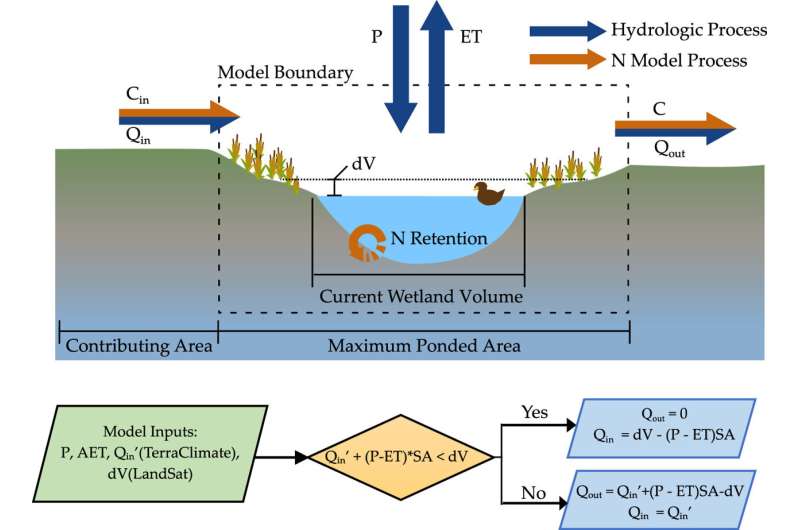
Small isolated wetlands that are full for only part of the year are often the first to be removed for development or agriculture, but a new study shows that they can be twice as effective in protecting downstream lake or river ecosystems than if they were connected to them.
Using a new method involving satellite imagery and computer modeling, researchers from the University of Waterloo found that since these small wetlands are disconnected, pollutants such as nitrogen and phosphorous get trapped. This is the first study to use satellite data for estimating nutrient retention.
All wetlands act like sponges, providing flood protection by absorbing the vast volume of water that can be suddenly released from rainfall or snowmelt. Improving water quality, providing habitat, increasing biodiversity, and trapping carbon are just some of the many environmental benefits wetlands provide. Their destruction increases our vulnerability to the extreme effects of climate change, including flooding, drought and the frequency of storms.
“This is especially a concern in regions like southern Ontario, which has already lost more than 70 per cent of its wetlands and is under threat to lose more from increasing population and developmental pressures. The rise in human population also increases the amount of pollution,” said Dr. Nandita Basu, a professor at Waterloo and Canada Research Chair in Global Water Sustainability and Ecohydrology. “If pollutants aren’t caught by small wetlands, then they’ll run into our lakes, beaches and eventually impact our supply of drinking water and ability to use the beaches for recreation.”
Basu, jointly appointed to the Department of Earth and Environmental Sciences and the Department of Civil and Environmental Engineering at Waterloo, worked with Dr. Frederick Cheng, who was her doctoral student on the project.
They used 30 years of satellite imagery from across the United States to determine how 3,700 wetlands were filling up and draining as a function of seasons and climate. Next, they estimated how much nitrogen would be removed by these water bodies.
“Being disconnected can actually be better because they are catching the pollutants and retaining them as opposed to leaking them back to the stream waters,” said Cheng, first author of the study and currently a postdoctoral fellow at Colorado State University.
Next, Basu and her team will apply these techniques to Canadian wetlands across the Great Lakes basin as well as the prairie region in Western Canada.
Their paper appears in Environmental Research Letters.
More information:
Frederick Y Cheng et al, Disconnectivity matters: the outsized role of small ephemeral wetlands in landscape-scale nutrient retention, Environmental Research Letters (2022). DOI: 10.1088/1748-9326/acab17
Journal information:
Environmental Research Letters
Provided by
University of Waterloo
Study finds small isolated wetlands are pollution-catching powerhouses (2023, February 2)
retrieved 3 February 2023
from https://phys.org/news/2023-02-small-isolated-wetlands-pollution-catching-powerhouses.html
part may be reproduced without the written permission. The content is provided for information purposes only.